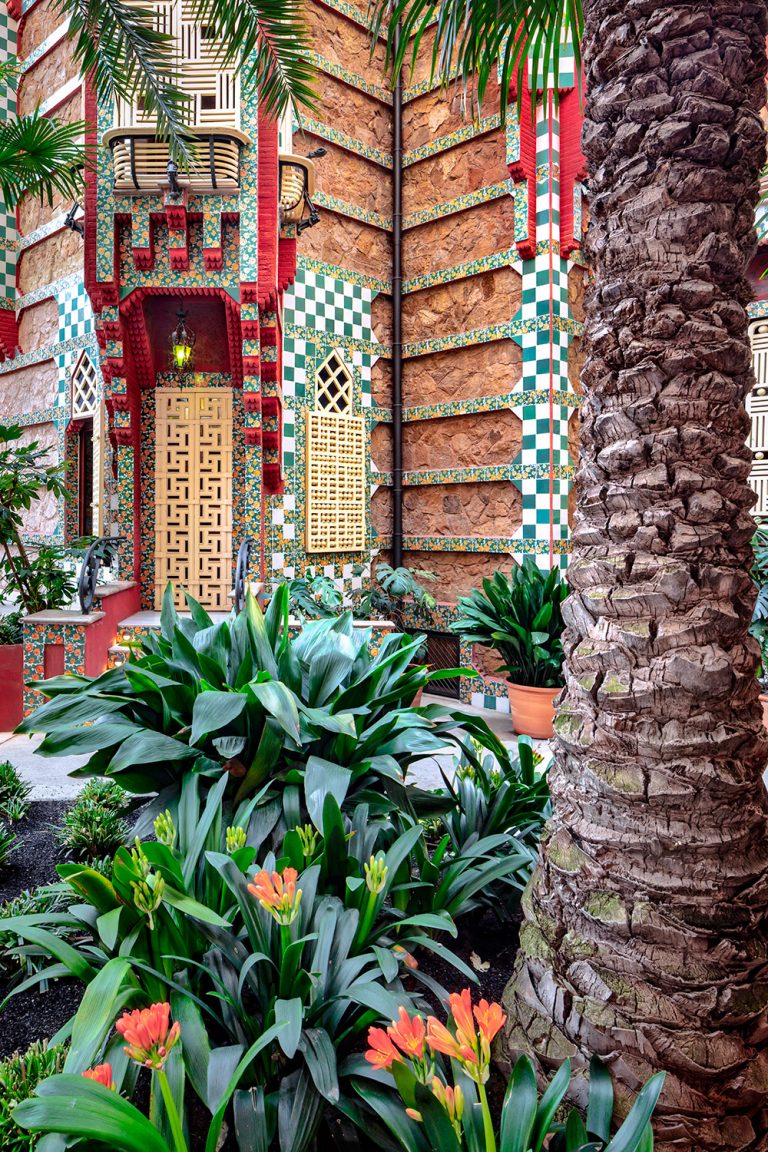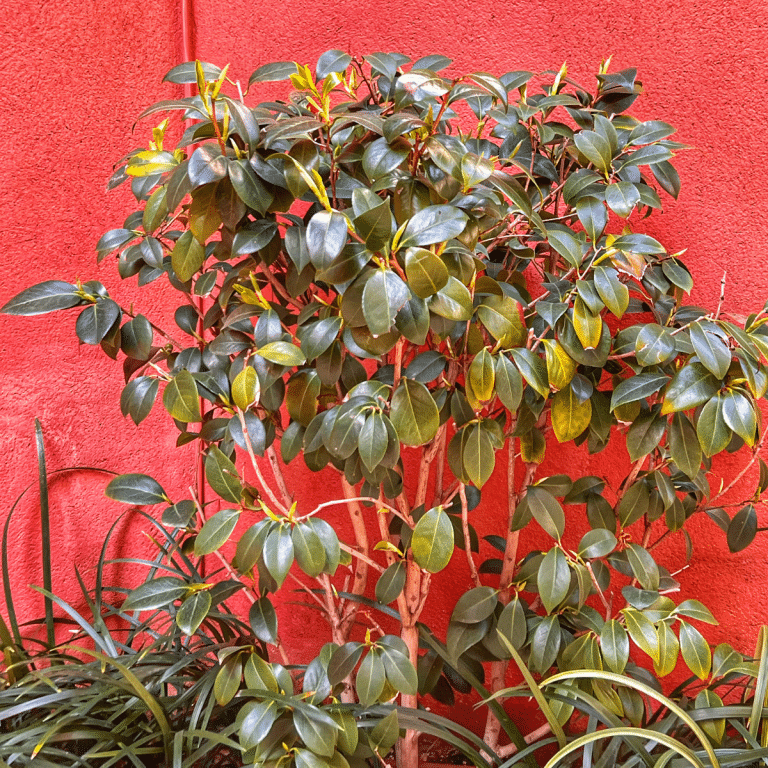
Camellia
Description: evergreen shrub originating in Japan, it can reach 6 m in height and grows slowly. Its leaves are dark green on top and paler on the underside. There are numerous cultivated varieties in white, pink and red, and single, semi-double and double flowers.
Flowering period: winter, with thick flowers about 5-8 cm in diameter.
Fruit: capsule-shaped, round and with black seeds.
Use: ornamental shrub for its flowers, in landscaping, on streets and in public gardens.
Preferences: shadier spots, temperate climate, it withstands low temperatures well and prefers soils rich in organic matter with low clay content.
Etymology/History: the Jesuit botanist and missionary of Czech origin Jiří Josef Camel (1661 – 1706), also known by his Latin surname Camellus, was the first European to describe and draw the camellias on a trip to the Philippines. The plants were named in his honour by Carl von Linné.
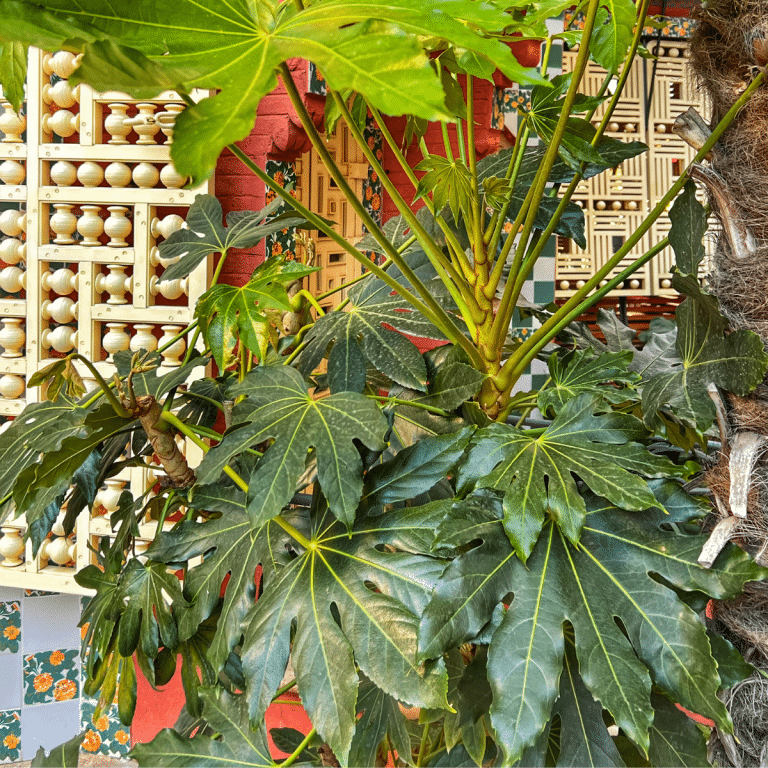
Fatsia
Description: a shrub with evergreen foliage originating in southern Japan, it can reach 3-6 m in height. It has a spiral leaf arrangement, and leaves measure from 20 to 50 cm long with a 50 cm petiole. Ostensibly palmate, they usually have between 7 and 9 lobes. They are glossy dark green in colour.
Flowering period: late autumn and early winter with small white flowers stemming from an umbel.
Fruit: small and black in colour.
Use: very common ornamental plant.
Preferences: Mediterranean climate where it can also be an outdoor plant given that it supports temperatures to –15ºC.
Etymology/History: The genus name Fatsia is derived from the ancient Japanese “Fatsi”, meaning eight, and refers to the eight lobes commonly present on its leaves.

Monstera
Description: climbing plant typical of the tropical rainy zone that stretches from southern Mexico to southern Panama, but extended by cultivation to other tropical and subtropical areas. It has a thick stem and can reach 20 m in height; in the wild it climbs up trees. Its characteristic leaves are heart-shaped, 25 to 90 cm long and 25-75 cm wide. The adult leaves are lobed.
Fruit: similar to a cob of corn about 25 cm long and 3-4 cm in diameter.
Use: mainly an indoor plant, but in temperate climate conditions it neither flowers nor bears fruit.
Preferences: shade.
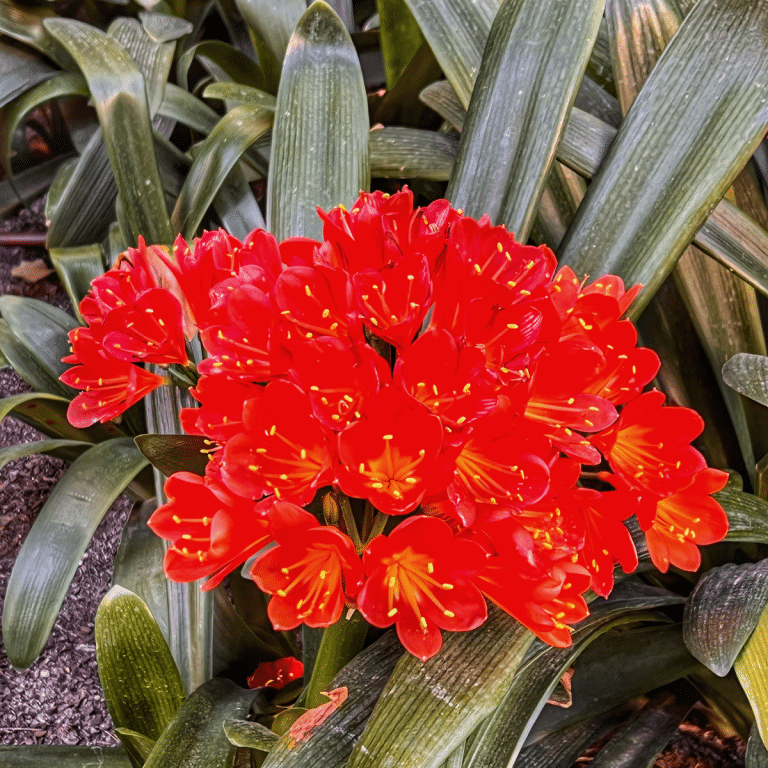
Clivia
Description: plant native to South Africa. The bush lily has a fleshy stem that is mainly underground, called a rhizome, which is 2 m in diameter and has numerous fleshy roots. The stem produces long, arched leaves, strap-like in appearance, that grow to about 45 cm long, arranged in two opposite rows. Its colourful, funnel-shaped flowers are produced in an umbel-shaped inflorescence, and are red, orange or yellow in colour, sometimes with a faint but very sweet scent.
Flowering period: early spring.
Fruit: spherical, bright red berry 5 cm in diameter that produces few seeds.
Use: very common ornamental plant.
Preferences: although it tolerates the shade well, it needs good light in order to grow and flower.
Etymology/History: it is also known as “kaffir lily” due to the presence of lycorine in small amounts inside it, which makes it poisonous. The genus, Clivia, was identified by the botanist John Lindley, who decided to immortalize the name of the Duchess of Northumberland, Lady Charlotte Clive, who first grew the plant in England. The Latin-specific epithet miniata in the full name (Clivia miniata) means ‘cinnabar’, the colour of red lead, which refers to the flowers.
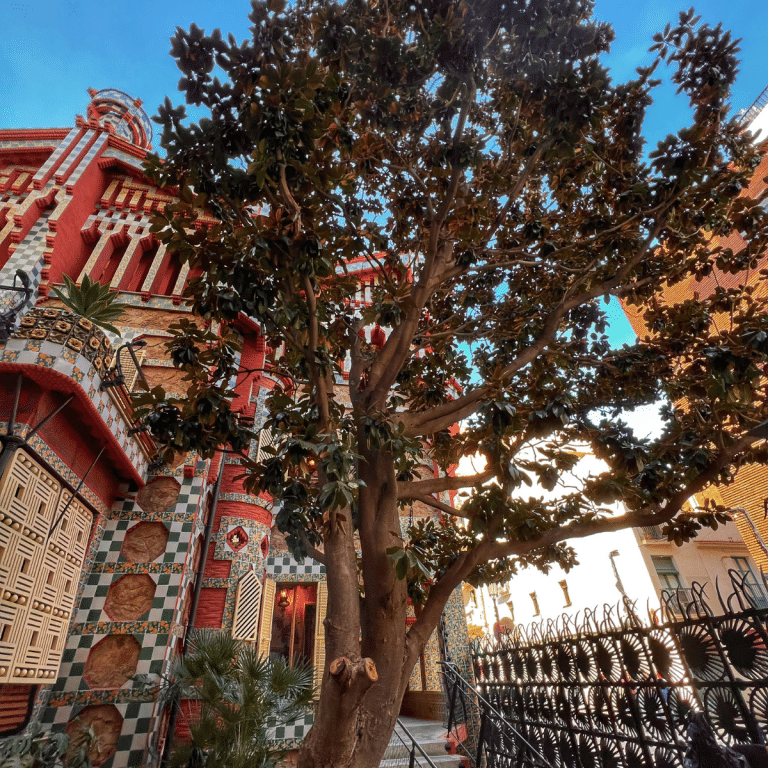
Magnolia
Description: a tree brought from the Southeast United States in the early 18th century. It is one of the oldest plant species still on Earth, in terms of evolution. This tree of corpulent evergreen leaves can grow 25 m tall, and has smooth grey bark and a conical crown. Its leaves are oval, about 10 to 20 cm long, bright green above and reddish below. The flowers are of white or yellowish colour, very large, up to a hand-span wide, with a pleasant scent; they wither in just a few days.
Flowering period: flowers from May to July, with fruits in autumn.
Fruit: acorn-shaped, with many individual fruits that open to release the red seeds that carry a kind of long thread. They often remain hanging, waiting for the wind to carry them away.
Use: used mainly in parks.
Preferences: temperate zones with a climate similar to that of its area of origin.
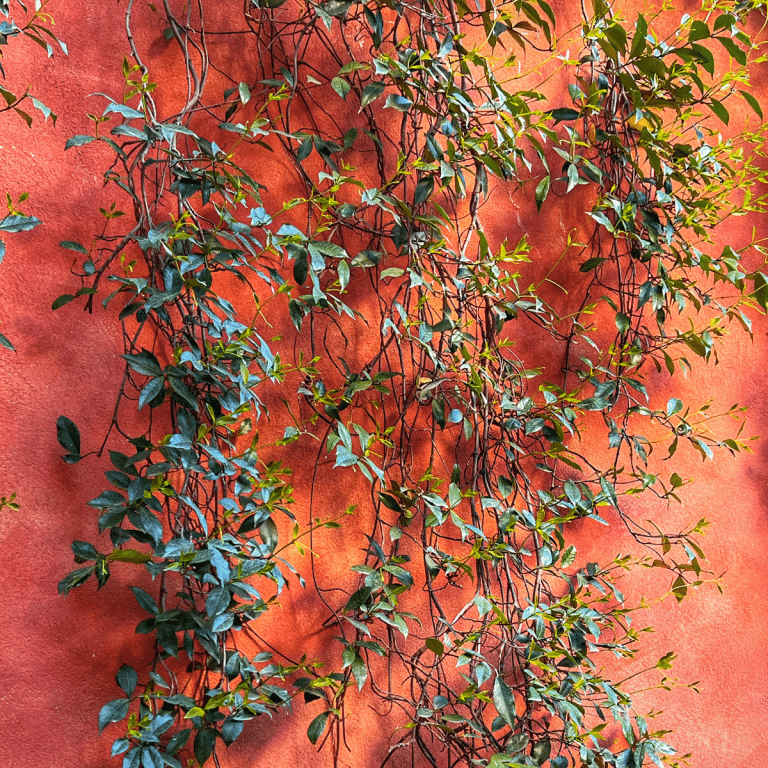
Jasmine
Description: woody creeper, native to Southeast Asia. Its stems are relatively narrow and it can reach 7 or 8 m with the help of a prop. Its flower is white, measuring 1 to 2 cm, and has a pleasant, intense scent. It is a plant appreciated for its spectacular flowering, but it also has beautiful foliage. Its leaves are an intense green colour, lance-shaped and up to 10 cm long.
Flowering period: spring.
Use: mostly in gardens and on pergolas, although its nature as a climbing plant allows it to wind around multiple structures.
Preferences: it withstands cold and diseases very well; it can also live in full sun or in shade. In cold temperatures its leaves acquire a reddish hue.

European fan palm
Description: palm typical of the Garraf Massif and one of the few European palms in existence. It is only found near the sea, and not in the interior. Its height usually does not exceed 2 m, since it grows in poor soils, where the ground does not retain water. However, well cared for in parks it achieves a more arboreal and elegant aspect, being able to grow up to 6 metres. It has large fan-shaped leaves, with strong, downward-pointing thorns on the petiole. This protection hinders the passage of any small animals attempting to climb up in search of the sweet, juicy apical shoots. It is usually a dioecious species (having separate, unisex flowers) with yellow, grape-shaped flowers.
Fruit: red or dark pink, similar to dates, with a sweet and bitter taste. They ripen at the end of summer and are eaten by different animals.
Use: mostly in public gardens.
Preferences: shadier spots, temperate climate, this palmetto withstands low temperatures well and prefers soils rich in organic matter with low clay content.
Etymology/History: it is a protected species, because many were cut down and it is very resistant to fire, easily sprouting after one.
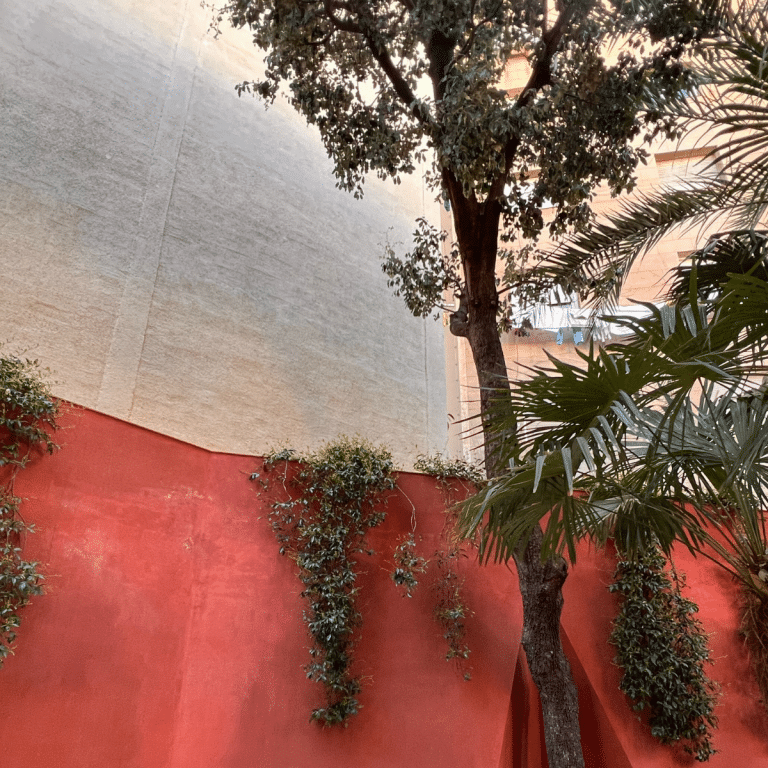
Holm oak
Description: perennial tree, corpulent, up to 20 metres tall, has a wide, dense and more or less rounded crown, and its grey bark has shallow cracks. Its leaves are small, between 3 and 7 cm, green above and white below, with an elliptical shape and with a tough, leathery layer that prevents water evaporation. Its flowers are feminine and masculine, small and not particularly showy.
Flowering period: April to May, with fruits in September.
Fruit: the acorn, which has a bitter taste.
Preferences: western Mediterranean climate; resists drought very well and can live in full sun.
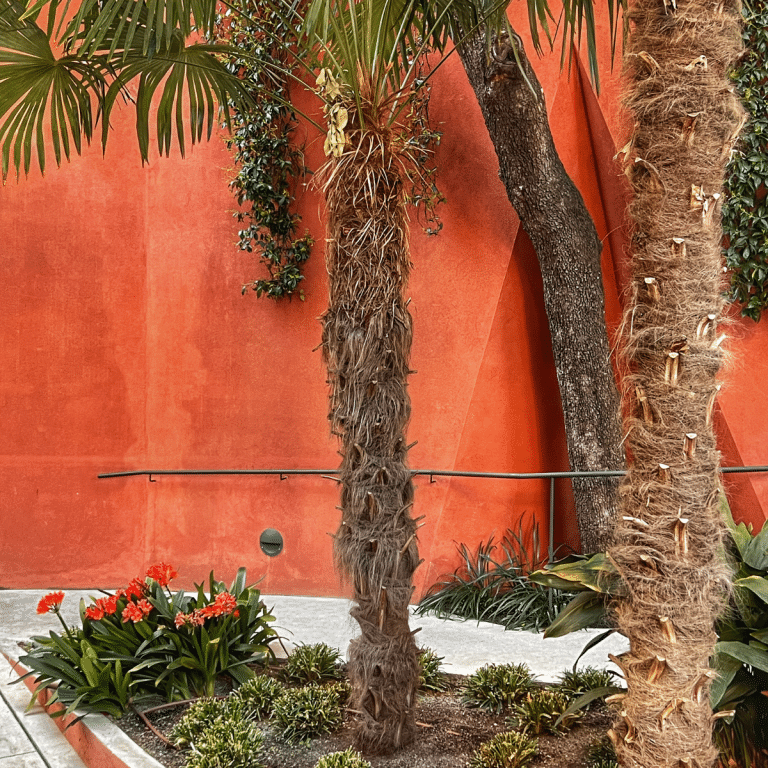
Windmill palm
Description: palm native to central and eastern China, but planted as an ornamental in all temperate zones, with a notable presence in Mediterranean countries. Its trunk can grow 12 m high and is covered by the bases of fallen leaves, giving it a hairy appearance. Its fronds have a leaf blade about 50 cm long by 75 cm wide, with petioles with serrated edges somewhat longer than the blade.
Flowering period: winter, with thick flowers about 5-8 cm in diameter.
Fruit: small drupes, dark blue, not edible.
Use: ornamental plant.
Preferences: good resistance to cold and to high temperatures; requires a lot of sunlight.
Etymology/History: its scientific name, Trachycarpus fortunei, honours Robert Fortune, a Scottish botanist who extensively toured China and Japan and introduced the Chinese tea plant in India.
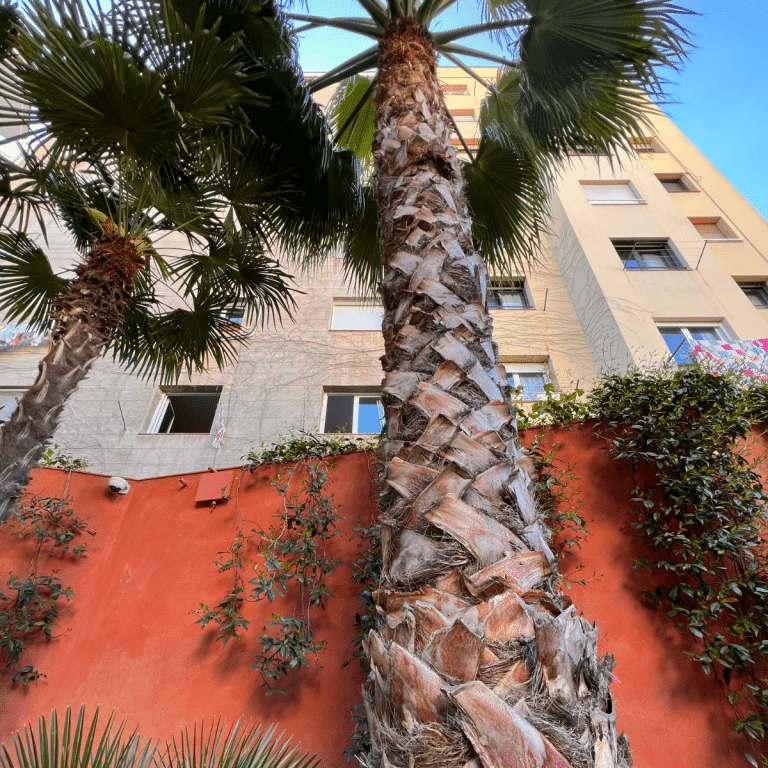
Washingtonia
Description: palm tree with fan-shaped leaves, native to the western part of North America, usually reaches 20-25 m in height. Its trunk is not of woody consistency, as in typical trees, being rather a very fibrous and hardened herbaceous stem, in this case cylindrical and somewhat enlarged at the base. It has a greyish tone with some bluish hues. The leaves are grouped in an apical rosette, that is, at the top of the stem, and are palmate, with a round or fan-shaped contour, strongly lobed, with filaments at the edges of the lobes (to which the specific epithet filifera alludes in the full name: Washingtonia filifera). The leaves are quite large (up to 2 m diameter). Its flowers are small, whitish and not especially attractive; they are grouped in inflorescences that hang facing downward toward the ground.
Fruit: fleshy, like small dates of an initially dark brown colour that turn black at the end of ripening.
Use: ornamental plant in parks, gardens and along public roads.
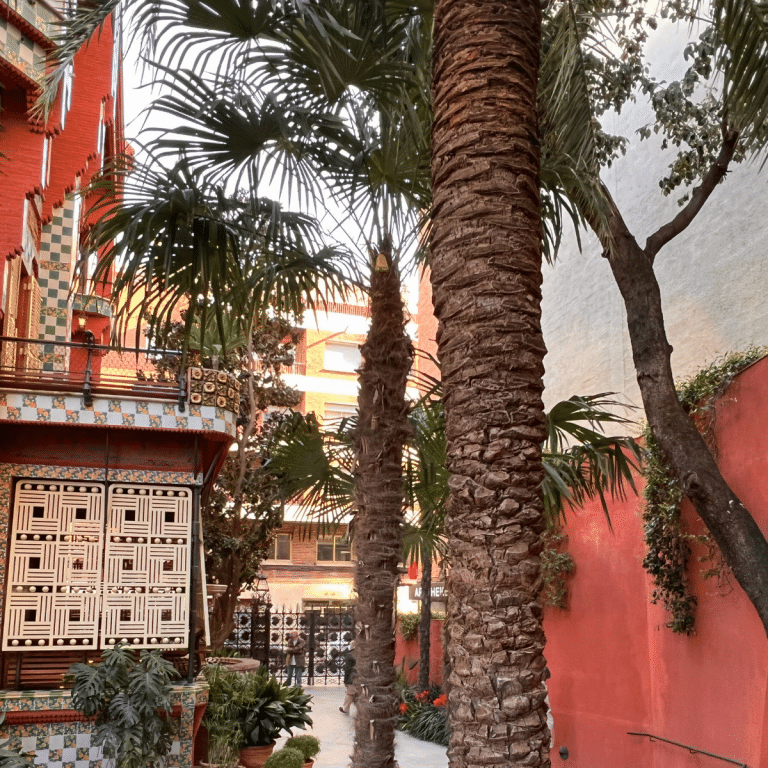
Date palm
Description: palm native to North Africa and Southwest Asia, but as it was widely cultivated to obtain prized dates, it is difficult to determine the area where it is really autochthonous. It arrived in Spain thanks to the Arabs. It can grow up to 30 metres high and its trunk is covered with the fallen leaves that give it bulk. Its leaves are bluish-green, up to 4 metres long, divided into segments folded lengthwise. It has strong, aggressive thorns at the base of the frond. The date palm is dioecious, which means there are male individuals (male flowers) and female individuals (female flowers), which are the ones that give the dates.
Flowering period: April-May, with flowers gathered in inflorescences protected by a papery covering.
Fruit: date, 4 to 8 cm long, first of a orange tone and red at the end.
Use: ornamental plant used in streets and squares.
